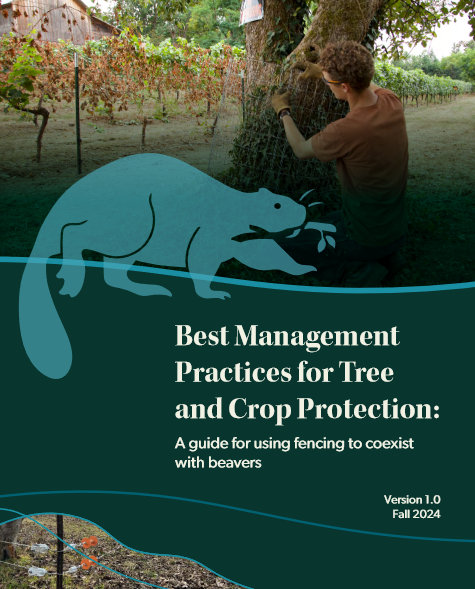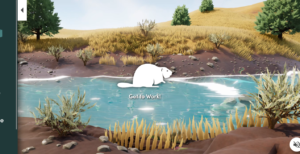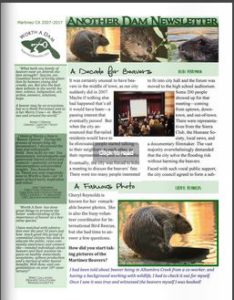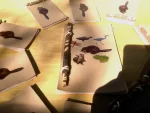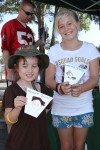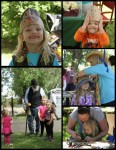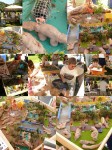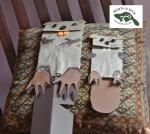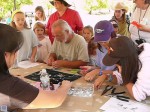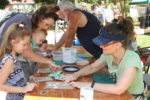 Not too long ago Rachel Hofman of the NWF magazine in Vermont contacted me about an event they were co-sponsoring with the Clark Fork Coalition in Montana about the benefits of beavers. She was working on a flyer to promote the event and wanted to use a few of Cheryl’s great photos to do so. The talk would be given on October 25th by Amy Chadwick, who is also a friend of ours.
Not too long ago Rachel Hofman of the NWF magazine in Vermont contacted me about an event they were co-sponsoring with the Clark Fork Coalition in Montana about the benefits of beavers. She was working on a flyer to promote the event and wanted to use a few of Cheryl’s great photos to do so. The talk would be given on October 25th by Amy Chadwick, who is also a friend of ours.
It sounded like a fine cause, and it reminded me I hadn’t seen that particular photo in a while, so Cheryl gave consent and then we pretty much forgot about it because not long after our exchange the entire napa-sonoma valley erupted in flames and that held our attention for a while. Yesterday I was reminded of it by reader Rob Rich who sent me some great information they put out on beavers. It reminded me that I had forgotten to share it, so enjoy!
Beavers – Nuisances or Watershed Heroes?
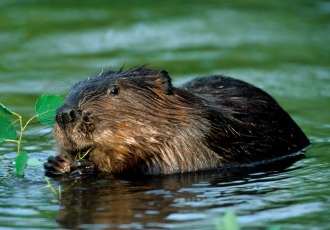 For CFC’s inaugural Beaver Month we chatted with Andrew Jakes, Regional Wildlife Biologist for National Wildlife Federation about the unsung bucktooth heroes of the watershed – the beaver.
For CFC’s inaugural Beaver Month we chatted with Andrew Jakes, Regional Wildlife Biologist for National Wildlife Federation about the unsung bucktooth heroes of the watershed – the beaver.
Why are beavers considered ecosystem engineers?
Beavers aren’t just considered ecosystem engineers…beavers are THE quintessential ecosystem engineer! They change a landscape like no other species in the world, besides humans. They change the landscape to suit their needs, and when they do that, it turns out that they change a lot of other things too.
OK, so what else changes in the landscape when beavers are present and building dams?
So much! When beavers show up, a lot starts to change. Studies have shown that beaver dams change everything in the system; from soil to vegetation to water quality to wildlife. It’s hard to sum up in only a few sentences, but I’ll do my best to give you a summary…
First of all, beaver dams slow the flow of water. This means water is on the landscape for longer. This can cause the floodplain to expand, soil structure to change, and the water table to rise. All of this also means that riparian vegetation can thrive. This means extra foraging opportunities for beavers and other creatures, so more wildlife starts to frequent the area. It’s no secret that wetlands are beneficial to the ecosystem, and beavers are little wetland creators.
The bottom line of all this is that when a beaver dam shows up, we see an increase in biodiversity, which thereby means the ecosystem becomes more resilient.

You can read the rest of it the fine story here. The entire ‘beaver appreciation month’ concluded with the talk by Amy Chadwick at a local pub in Missoula on Thursday evening. Obviously convincing the land owners of Montana to coexist with beavers takes the best and the brightest, and Amy (who worked with Skip Lisle) is well up to the task.
Walk and Talk: Busting Beaver Myths
During the month of October, the Clark Fork Coalition is putting a spotlight on the hard-working, fur-ball hero of the watershed – the beaver. Join the Clark Fork Coalition and Ecologist Amy Chadwick for an evening of natural history and cutting-edge restoration featuring beavers and beaver mimicry. Chadwick is an Ecologist at Great West Engineering and the chair of the Montana Beaver Workgroup. Amy has been working in stream and wetland ecosystem assessment and restoration in Montana for 20 years, but in recent years her work has focused primarily on beaver habitat restoration and improving natural water storage.
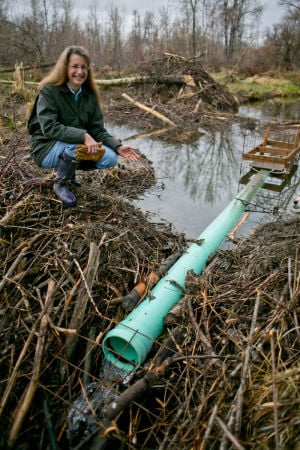 Amy will share facts of about beaver ecology, review how beaver act as ‘ecosystem engineers’ in western watersheds, and share the implications lost beaver habitats on our water budget. Chadwick will be joined by Andrew Jakes, Wildlife Biologist with the National Wildlife Federation for a discussion of beaver habitat recovery work underway in the Upper Clark Fork and a Q & A session.
Amy will share facts of about beaver ecology, review how beaver act as ‘ecosystem engineers’ in western watersheds, and share the implications lost beaver habitats on our water budget. Chadwick will be joined by Andrew Jakes, Wildlife Biologist with the National Wildlife Federation for a discussion of beaver habitat recovery work underway in the Upper Clark Fork and a Q & A session.
Don’t you wish you were there listening to Amy’s talk? I met her at the Beaver Conference in 2013 and we have kept in touch over the years when beaver issues arose over the years. She worked with Skip installing flow devices in the area for a while and now carries on the work bravely on her own. It’s wonderful to see folks like Amy and the Clark Fork Coalition working in their own backyard to make way for beavers and teaching others about their benefit to the environment. I hope the beaver night was a resounding success and I hope NWF thinks of us first when they have a beaver event to promote in the future!












